International framework to tackle technology facilitated human trafficking

In the present times, human trafficking has become one of the most significant industries in the world. There is no specific number of total cases of human trafficking in the world. Still, International Labour Organization (ILO) has estimated that there are more than 25 million1 International Labour Organization (ILO) has estimated that there are more than 25 million victims, and such trafficking affects approximately 40 million people worldwide2
Within these numbers, ILO expects that there are 4.8 million cases of sex trafficking victims, whereas there are 20.1 million victims of labour trafficking. The term “trafficking in persons” has been defined by the United Nations under Article 3 paragraph (a) of the Protocol to Prevent, Suppress and Punish Trafficking in Persons, 2003, as the: “recruitment, transportation, transfer, harbouring or receipt of persons, by means of the threat or use of force or other forms of coercion, of abduction, of fraud, of deception, of the abuse of power or of a position of vulnerability or of the giving or receiving of payments or benefits to achieve the consent of a person having control over another person, for the purpose of exploitation.” Further, the same convention under Article 5 requires “each State Party to adopt such legislative and other measures as may be necessary to establish as criminal offences the conduct set forth in Article 3 of this Protocol, when committed intentionally”. Therefore, one can observe that the practice of human trafficking is widely recognised globally; however, such an approach is limited to the traditional system, which does not adequately cater to technology’s role in human trafficking.
Impact of technology in human trafficking
Today, our society is highly dominated by technological growth in each domain. Technology has taken centre stage with the progress towards developing artificial intelligence and other socio-technical tools. Nevertheless, technology has always remained a double-edged sword as it has played a crucial role in shaping the geography of criminality. Earlier offenders used to commit a crime in a particular location; however, with the internet’s popularity, the relevance of geographical location has come to an end. Crimes have become borderless, as anyone can commit crimes at any location just by sitting at home. Internet and other technologies have opened cyberspace as a new space for offenders to commit crimes. Moreover, such space offers anonymity and complexity to commit a crime which often acts as an essential element of security for the offenders.
Similarly, offenders have now started using cyberspace as a new geography to commit the offence of human trafficking. Some traffickers have modified their methods due to the development of new technologies where they use such online platforms for recruiting, advertising, and victim exploitation. Although the methodology to commit the crime remains similar, cyberspace has become the new destination for crime because it offers anonymity and global reach. It is pertinent that technology can play a role in the recruitment and exploitation stage by facilitating the identification, location and contact of potential victims. Different mechanisms are at play depending on the type of exploitation. The traffickers now use the internet and social media as tools to recruit, exploit, and isolate the victims of human trafficking. In particular, popular websites like Facebook, Instagram, and Snapchat are used by traffickers to gather or steal data about prospective victims, track targets, keep tabs on them, pose as victims, and perform other activities.3
Moreover, specific social media platforms offer various safety characteristics, such as message encryption, membership-based tailored profiles, and hosting user groups with particular interests, which the traffickers use for recruitment and exploitation.4 Council of Europe has noted three main forms of recruitment of victims on technology11
These forms are:
- Victims may fall prey to traffickers via websites and other internet services
- Victims may be traded or their services ‘advertised’ to clients via the internet
- Victims recruited in traditional ways may be forced to contact clients online.
Nowadays, the traffickers have learned to modify their tactics with the aid of the internet to more effectively target particular victims, either actively “hunting” those they believe to be at risk of becoming victims of trafficking or passively “fishing” for potential victims by posting advertisements and watching for responses. Online job advertisement portals, dating applications, marriage applications, and similar applications are used to find potential victims of trafficking. The offenders build trust with the victim through these portals and recruit them for trafficking. Physical interactions have come to a significantly lower level as most financial transactions are also now done through the use of technology. Therefore, because of such advanced features available for the offenders to commit human trafficking, law enforcement agencies face difficulties curbing such practices. The problem is encountered at two stages- first is collecting digital evidence to prosecute the traffickers working online, and second is technical difficulties by being unable to sustainably mitigate the online functioning of traffickers due to the involvement of the dark net and other anonymous platforms.
Legal measures to tackle technology facilitated human trafficking
In the last two decades, there has been a consensus at the global level regarding the need to tackle the problem of cybercrimes efficiently and the rise of technology-facilitated human trafficking. However, on an international level, no binding policies address trafficking online. Nevertheless, since 2003, the international framework regarding these issues has significantly improved with the enforcement of the Cybercrime convention. The cybercrime convention, also known as Budapest Convention, is the first international convention to combat internet and computer crime by unifying national laws, enhancing investigative methods, and fostering more international cooperation. This convention is perceived as an essential tool and a convention covering all crimes committed on or via the internet. Although this convention focuses more on the aspect of the sexual exploitation of children and does not touch the issue of human trafficking, this convention is still considered one of the first laws to tackle the problems of crimes taking place within or through cyberspace. This convention provides certain powers and procedures which permit lawful interceptions, gives the power to search devices, offers procedural and investigative tools, and allows police to use cyber-technologies for cyber-investigation, including investigation for human trafficking.5
Another recent landmark contribution to tackle the problem of technology and human trafficking is the decision given by the Supreme Court of Texas.6 The court considered that at present, as per Section 230 of the Communications Decency Act, social media enjoys third-party immunity from prosecution regarding any publication on their portal, irrespective of the nature of the post. The court nevertheless ordered that although Facebook cannot be sued for what users publish on the portal, it can be sued for allowing sex traffickers to use the site as a recruitment tool. Due to this judgement, social media and other networks have introduced changes in their terms of services to introduce layered protection for their users.7 A similar measure was also taken by the Washington Supreme Court8 who was dealing with a case where three children between the ages of 13 and 15 years old were advertised for sex on Backpage.com, an online classified, and as a result, were repeatedly raped by customers. The plaintiff filed the complaint, and the court took cognisance. The plaintiff accused Backpage of “knowingly developed a nationwide online marketplace for illicit commercial sex” and did so “because of the millions of dollars that they generated from the website every month. Backpage argued that it is merely an Internet Service Providers and should get immunity under section 230 of the Communications Decency Act. However, the court disagreed with it and held that the blanket immunity provided by the law is very dangerous when the allegations involve a website knowingly contributing to the illegal activity rather than acting as a passive host. Hence, the trial was allowed to continue9 Concerning Internet Service Providers, European Union has taken a parallel stance. Accordingly Directive 2000/31/EC10, issued on electronic communications, addresses the regulation and liability of providers and intermediaries of online content, which is crucial for online sexual exploitation. Within such Directives, Article 15 articulates that although providers do not have a general obligation “to monitor the information which they transmit or store” or “actively to seek facts or circumstances indicating illegal activity” and hence cannot be held liable for being a “mere conduit”, however, if a service provider initiates the transmission, selects the receiver of the transmission, or modifies the information contained in the transmission, then the provider can be held liable. Moreover, the Internet Service Provider will also be held liable if it had actual knowledge of illicit content or became aware of it and did not promptly remove it or block access to it.
Conclusion
Technology has the potential to greatly assist in detecting and preventing crimes, both online and offline, by enabling the monitoring, recording, storage, analysis, and exchange of information on trafficking in persons. Technology can enhance the protection of human rights. However, these technologies must be employed in a manner that fully respects the rights of individuals. In this regard, it is crucial to implement measures that protect personal data, ensure compliance with data protection standards, safeguard privacy and freedom of expression, and carefully consider the human rights implications that may arise, particularly with respect to migrants and victims. Appropriate steps must be taken to mitigate any adverse impacts that may result from using these technologies.
Moreover, digital investigations must take place at a more progressive rate. Currently, online portals and websites do not fear the law because they believe they merely act as Internet Service Providers. It is a substantive argument that such providers cannot be made liable for everything that takes place on their websites. While holding internet service providers responsible for online sex trafficking is one potential solution, it is not the only way to combat this issue. It is essential to recognise that human trafficking has existed both before and after the advent of the internet. Therefore, law enforcement agencies must collaborate with internet service providers to obtain the necessary technical assistance to prevent the sexual exploitation of minors. These stakeholders can develop effective solutions to address this problem by working together. Artificial Intelligence has also been seen as a promising solution to detect and target cases of online human trafficking as it can easily detect the trails of issues helping law enforcement agencies reach the responsible person for the crime. Overall, curbing the use of technology for human trafficking requires a concerted effort and a multi-pronged approach.
References
| ↑1 | https://traffickinginstitute.org/breaking-down-global-estimates-of-human-trafficking-human-trafficking-awareness-month-2022/. |
| ↑2 | https://world101.cfr.org/global-era-issues/globalization/human-trafficking-global-era. |
| ↑3 | https://ine.org.pl/en/the-role-of-social-media-in-human-trafficking/. |
| ↑4 | https://www.researchgate.net/publication/360540467_Technology_and_Human_Trafficking_Reconstructing_the_Nexus?enrichId=rgreq-96d8b594a48ac48ac3d71925d7736844-XXX&enrichSource=Y292ZXJQYWdlOzM2MDU0MDQ2NztBUzoxMTU0OTAxOTE2ODE1MzYyQDE2NTIzNjE0ODI1MDc%3D&el=1_x_2&_esc=publicationCoverPdf. |
| ↑5 | https://rm.coe.int/16806eeec0. |
| ↑6 | https://www.jurist.org/news/2021/06/texas-supreme-court-rules-facebook-can-be-sued-for-sex-trafficking/. |
| ↑7 | https://ine.org.pl/en/the-role-of-social-media-in-human-trafficking/.. |
| ↑8 | https://static.reuters.com/resources/media/editorial/20180420/JS%20v%20Village%20Voice%20Media%20Holdings%20LLC.pdf. |
| ↑9 | https://lawcat.berkeley.edu/record/1127494?ln=en. |
| ↑10 | Council Directive 2000/3 1, art. 15, 2000 O.J. (L 178). |
| ↑11 | https://www.unodc.org/documents/human-trafficking/2008/BP017TechnologyandHumanTrafficking.pdf. |

